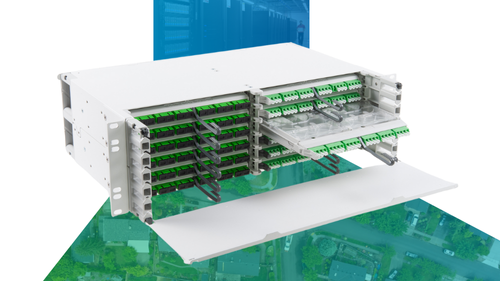 This blog was originally posted in Microwave & RF on July 23, 2018.
This blog was originally posted in Microwave & RF on July 23, 2018.
Broadband services and higher bandwidth have never been in greater demand. Network deployments are accelerating in cities, as well as rural areas. In addition to residential subscribers, operators are looking to connect everything from businesses and utility networks to small cells for 4G and 5G rollouts.
CLICK TO TWEET: Experts from CommScope and Walker Associates blog about how new technologies are enabling network operators to overcome bandwidth challenges.
In the midst of this growth, the variety of connectivity media and network-operator business models varies more than ever before. Networks now incorporate fiber, copper, and wireless technologies, and traditional internet service providers (ISPs), cable companies, utility companies, and municipalities are building or considering broadband networks in an effort to meet growing demand for bandwidth.
In this blog, we’ll look at how the broadband landscape is changing, how various types of providers are seeking to meet the ever-growing demand for bandwidth, and how new technologies are enabling network operators to overcome the challenges.
The Changing Broadband Landscape
Historically, service providers like telcos, cable operators, and satellite operators have been the exclusive broadband providers. However, this situation has changed in the last five years.
Due to ROI requirements, traditional service providers often overlooked rural areas. Now, local municipalities and utility companies have stepped in to meet broadband demand in those locations. These local entities can now tap into communications infrastructure subsidies administered by the FCC. They’re also able to use revenue bonds that spread network build-out payments over 10, 20, or even 30 years.
In cities, local governments have started planning for smart-city initiatives that link tens of thousands of sensors, cameras, small cells, Wi-Fi access points, and other devices. Such systems leverage automation to help cities reduce operating costs and improve quality of life. Smart-city networks will need infrastructure—and that includes fiber, copper, and wireless.
Essentially, service providers, utilities, and municipal governments are all scrambling to deploy faster, higher-bandwidth networks. They face three key challenges: cost, power, and access.
Cost
The explosion in bandwidth requirements (with consumers increasingly requesting up to 1-Gb service) is outpacing technology’s ability to deliver it at a reasonable cost-per-bit. The upfront cost of standing up a network is very high: Fiber construction out to network endpoints is as much as 80% of the cost of building a new network, while existing copper networks have limited rate-reach curves and fixed wireless access wrangles with capacity and interference issues.
The realities of network costs are driving a greater need for the broadband network to serve multiple functions and therefore drive multiple revenue streams beyond just residential broadband delivery. Wireless (soon to be 5G) fronthaul and backhaul, utility supervisory control and data acquisition (SCADA) transmission, and business services are a few such examples.
Power
Every edge node in a network needs power, and that power will likely come from local utility company grids. This requirement is driving new partnerships between cities, utilities, and traditional service providers. In addition to grid power, operators are using Power over Ethernet (PoE) to reach some devices in the network.
Access
In cities, the move to build smart-city networks will require devices in all sorts of locations, and the city or other service provider will have to obtain permission to place devices on light poles, utility poles, street furniture, or buildings. Cities and utilities have lots of leverage in this equation because they typically own light poles, utility poles, and street furniture where devices may be placed.
Technology Evolution
Network operators can lower the cost-per-bit of bandwidth by combining newer technologies in their infrastructure. Here are some options:
Fiber
Despite the variation of network technologies available, broadband services are converging around fiber because it delivers much higher bandwidth and is thus more “future-proof.” These networks need to be designed with cost and flexibility in mind: flexibility to accommodate different technologies (how wireline will hand off to wireless, for example), and keeping costs under control by using technologies like wavelength division multiplexing (WDM) to expand the bandwidth capacity of existing fiber networks.
G.fast
In loops shorter than 1,000 feet, G.fast technology can deliver 1 Gb/s over existing twisted-pair cable. G.fast is a higher-speed variant of DSL. Network operators can run fiber up to an apartment complex, for example, and leverage G.fast to deliver high-speed broadband over the twisted-pair wiring within the building.
WDM PON
Lots of existing last-mile networks were built as passive optical networks (PONs). WDM is extending the capacity of PONs by adding new wavelengths to the fiber. This has driven significant bandwidth improvements in the last few years, as so-called NGPON2 can deliver 1-Gb/s service on a single wavelength.
Fixed wireless access
In areas where trenching fiber is simply too expensive and G.fast doesn’t reach far enough, fixed wireless access is providing point-to-point or point-to-multipoint service to homes or businesses. This technology is usually offered by wireless internet service providers (WISPs) rather than traditional telco or cable operators. The shift from 4G mobile wireless to 5G will significantly change the viability of this technology because 5G delivers much higher bandwidth.
In every type of location, network operators will use a mix of these technologies. Network operators (and prospective operators) are already starting to build networks with 5G in mind, so all of these technologies should be considered. For example, it makes sense to leverage WDM when possible to increase the capacity of existing fiber and PON networks. G.fast is the obvious choice for multiple dwelling units (MDUs).
The key is that cities, utilities, and providers need to start planning and building today. With a rich array of technologies and business models in the mix, it’s possible to optimize those new networks for cost-per-bit and to support future capabilities without breaking the bank.














